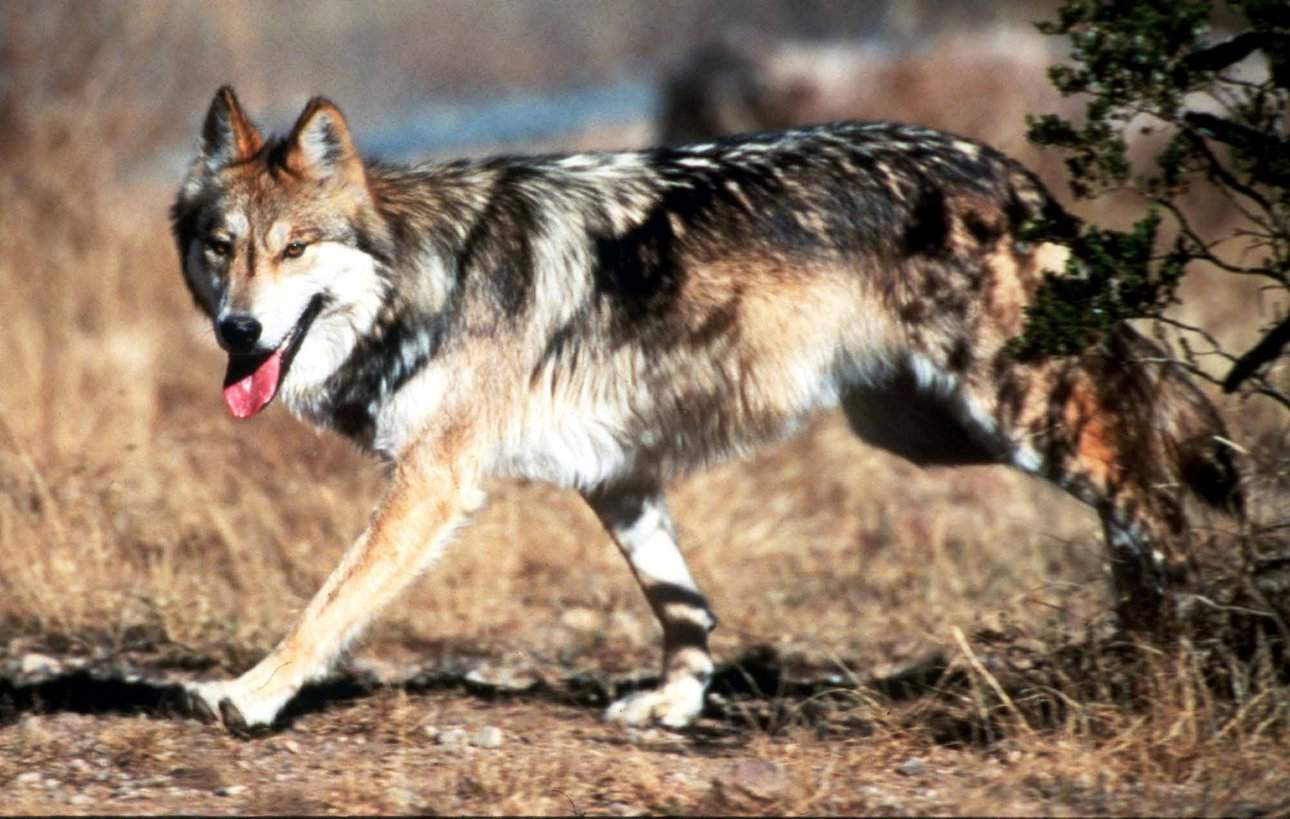Could the Mexican Gray Wolf - Source of Fascination and Hostility - Return to the West Texas Wilds?

In far-West Texas, there is strong resistance to Mexican Wolf reintroductions. This is based on unwarranted assumptions about their danger to humans and livestock. Ranching can be adapted to co-exist with the Mexican Grey Wolf, which is a smaller version of its Northern cousin found in Montana and Wyoming. The Mexican Wolf is not a danger to people – who in any case are armed. Wolves would help wild species, like pronghorn by reducing coyotes, the main predator of fawns. Wolves could also help control CWD by removing infected deer and elk. For uncounted thousands of years, wolves have helped the health of wildlife and habitat, and could do so again. Let us find a way to coexist with these wonderful animals.
NOTE: this article below is from Marfa Public Radio 93.5 FM and can be found here.
Lobo – the wolf. From Monahans to El Paso, the words are inscribed into West Texas – in place names, in team mascots. But the reality they evoke is almost unimaginable – that lobos, gray wolves, once roamed this land.
The last wolves in West Texas were killed in 1970. By the end of that decade, the Mexican gray wolf was extinct in the wild.
But the animal has endured, largely thanks to zoos. For one El Paso Zoo staffer, returning wolves to the West Texas wilds is a passion. He says that reintroduction here would require the support of state officials, and West Texas landowners and citizens.
The gray wolf – canis lupus – was once a dominant predator across North America. Texas was home to multiple sub-species. The Mexican gray wolf ranged from the Llano Estacado to present-day Arizona and northern Mexico.
But the relationship between wolves and pastoral communities has always been fraught, and as the livestock industry moved west, wolves were targeted. In 1915 alone, more than 900 lobos were killed in Arizona and New Mexico.
In Texas, the last two were killed in 1970 – one south of Alpine, one southwest of Sanderson.
In 1976, the animal was listed as endangered. Roy McBride, a legendary Alpine trapper, was commissioned by U.S. Fish and Wildlife to travel to Mexico – to see if he could trap lobos.
Rick LoBello is the El Paso Zoo’s education curator. In 1978, he was a Big Bend National Park ranger, He got a call from McBride, a former Sul Ross classmate.
“One day he called me to his ranch and said, ‘Rick, I want to show you something,’” LoBell said, “and I saw one of the wolves he had captured for the initial breeding program. It was at the moment when I saw that wolf – and I didn’t take video, I took 8mm film – when I saw that wolf, I thought, ‘I can’t believe what I’m seeing here.’ I didn’t even know the Mexican wolf existed.”
McBride succeeded in capturing just five wolves. But, along with several captive animals, they’re the forebears of the surviving lobos.
Zoos led the way in a breeding program. Lobos came to the El Paso Zoo in 1994. Today, the zoo holds older wolves, past the breeding age. But in a new exhibit that’s currently under construction, wolf litters may be born here.
In 1998, Fish and Wildlife began to reintroduce lobos in Arizona and New Mexico. Wolves can and do kill cattle, and the project met fierce opposition from many ranchers. Today, with wild lobo numbers just above 100, that opposition continues.
The El Paso Zoo has supported reintroduction. Carrie Trudeau is among zoo staffers who’ve helped build fences in Arizona designed to reduce wolf-cattle encounters.
After one long workday, the laborers gathered around a campfire.
“Then we were greeted by the sound of the wolf pack,” Trudeau said. “We could hear the yipping and howling. And that was really a shot through the heart. It was haunting. You get chills through your body – you realize that all hope is not lost, that we still have a chance to bring this very important species back.”
The federal government has led reintroduction elsewhere. But here, LoBello said, Texas Parks & Wildlife would have to lead. And private landowners would need to buy in.
Any West Texas wolf population would be small. But LoBello points to black bears, which have returned to Big Bend, and now thrive even in harsh desert.
LoBello notes that in Yellowstone, reintroduced wolves have thinned elk populations, leading to a more balanced and robust ecosystem. They’ve also generated millions in eco-tourism.
Here, Big Bend’s protected lands could be a place to start, he said.
Wolves inspire both intense fascination, and intense hostility. LoBello notes they were wiped out before their role here was understood.
“There is habitat there that will work for a small population,” LoBello said of the Big Bend region, “and they can sustain themselves if they’re given a chance. They might surprise us all. We might find out there are things they’re going to do to help maintain the biological integrity of the ecosystem that we never thought of. We won’t know that till we get them back in the wild and can study them.”
Ultimately, whether the lobos’ howls return is a decision for the people of West Texas.
